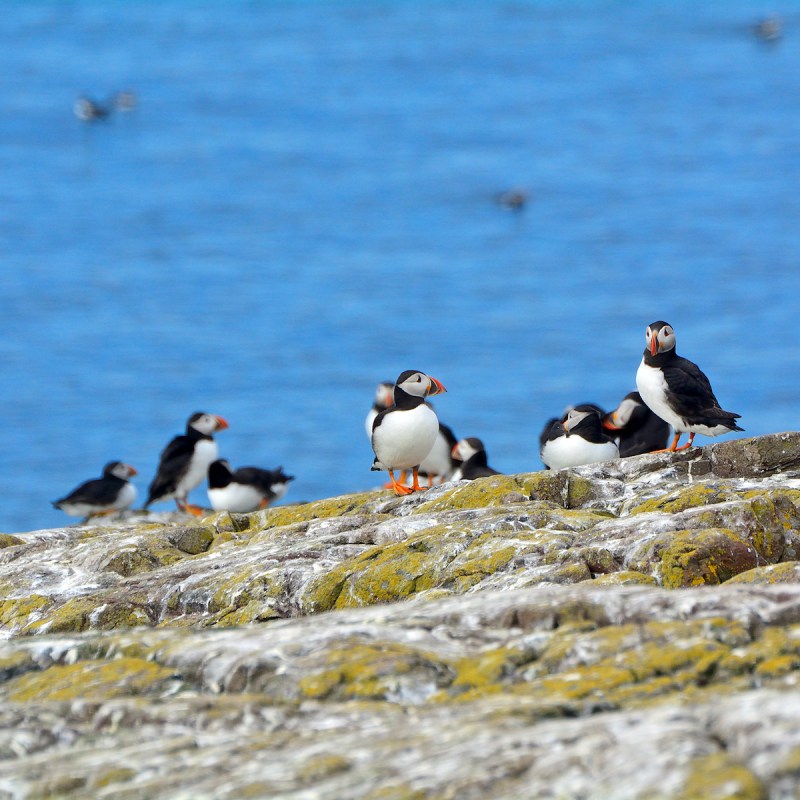
I have to admit that I am a sucker for animals — pretty much all animals, except for spiders. Be they in the ocean or on the land, fluffy or feathery, large or small, if there is a wildlife encounter to be had wherever I go, I’ll be there.
Videos by TravelAwaits
Having lived in Australia and traveled through the Rocky Mountains in Canada, scuba-dived in the Maldives and the Great Barrier Reef, I am somewhat spoiled, for sure. And there is absolutely no way that, when it comes to wildlife encounters, Europe cannot ever beat Canada or Australia, but that is not saying that there aren’t some great experiences to be found here.
Still one of my favorite places I ever visited is the seal sanctuary in Northern Germany (see below) for its sheer cuteness overload and the good work they do. Then there are puffins to see, even bears and wild horses to spot.
Why don’t you read on to find out what Europe has to offer when it comes to travel experiences of the animal kind? Here are my personal favorites, in no particular order.

1. Puffin Spotting
Farne Islands, Northumberland, England
I have been to Iceland and looked for puffins. It was too early in the year. I went to the islands of Guernsey and Jersey and looked for puffins. They had just left. Obviously, I did not do my research. In despair, my husband bought me a toy puffin on Jersey Island and a puffin mug in Iceland. I kept searching for puffins and trying to divine their obviously very busy schedule — until I got lucky on a staycation in Northumberland.
Finally, my travel schedule agreed with that of the puffins, and I got to see these cute little critters. A boat tour from Seahouses on the north-eastern English coast took me to the Farne Islands, a haven for seabirds and seals. So many birds, so much noise in the air, and quite a stench from the guano, but who cares? I finally got to get up close and personal with the elusive puffin. So adorable, and worth the wait.
Pro Tip: The tours take place between May and early October, otherwise the puffins will have headed off again.

2. Seal Sanctuary
Friedrichskoog, Germany
Being from the north of Germany, born and bred, I am forever singing the praises of the north, being so different to Bavaria and more clichéd south. And if you were not convinced to give the north a go over Bavaria, then this might just tip the scales: Just an hour’s drive from Hamburg lies the Seal Sanctuary Friedrichskoog.
Here they look after orphaned, lost, or hurt seal pups, raising and nurturing them before releasing them back into the North Sea. Not a touristy, gimmicky experience, this is a proper charity. You can, however, attend feeding time and talks to learn more about the seals, and, by buying a ticket, help fund the work. This is probably one of the cutest animal encounters I have ever experienced, you just fall right into those black saucer-shaped eyes.
Pro Tip: While you are sadly not allowed to cuddle one of the pups, the gift shop sells plush ones; those you can cuddle all day long.

3. Bear Rehabilitation
Brasov, Romania
You never forget your first bear, isn’t that how the saying goes? My first wild bear was a grizzly bear, just outside of Banff, Alberta. I was thrilled to bits, and even the next few did not calm me down — seeing them up in trees was especially amazing. Bears used to be more common in Europe, but as with the rest of the world, we are destroying their natural habitat, so numbers are dwindling dramatically, with many countries not having any wild bears anymore.
In Romania, however, there is still dense forest, and good people dedicated to making a better life for the local bear population. And the Bear Rehabilitation Centre is always welcoming help from around the world. So, unless you are coming from a place where you have bears in the backyard, this might just be an opportunity for you to see bears and help look after them. And afterward, you can also get some vampire experience, with Count Dracula having his castle nearby.
Pro Tip: Make sure you spend some days in lovely Bucharest, and maybe head to the nearby Danube to catch a cruise upstream to Vienna, or one of the other lovely capitals along the Danube.

4. Wild Horses
Camargue, France
Is there anything better than seeing herds of wild horses enjoying life in the spectacular countryside — except for maybe riding along the beach while seeing them? The Camargue is a region in southern France, a mere 70 miles from bustling Marseille, and a million miles away from quaint Provence. Wild and beautiful, it is a wet, flat land, full of salt lagoons, endless beaches, and herds of wild, snow-white horses. Plus, countless flamingos and other birds either live in the wetlands or are migratory.
And what better way than exploring this area than on horseback? If you are an experienced horseback rider, you can book yourself into a 5-day or week-long experience, enjoying outings along the beaches and rides through the countryside alongside the wild horses. Or, if you are not a rider yourself, but still love looking at horses, you can visit on a day trip from pretty Avignon.
Pro Tip: This really is an excellent road trip country. Why not rent a car and take in Marseille, Arles, Avignon, Nimes, Montpellier, and more, while you are in the area?
5. Whale Watching
Vesteralen Coast, Norway
Far up on the map, way past the Arctic Circle and north of Iceland, Norway’s Vesteralen Coast is a formidable and breathtakingly beautiful natural place. Here, an archipelago of some 1,330 islands or so, far from civilization, offers year-round whale watching in stunning surroundings. If you come in summer, there are hiking trails and the midnight sun to celebrate; if you come in winter, you’ll have a chance to catch the northern lights.
While the location does offer whale-watching opportunities year-round, the best time to spot them is in winter. Orca and humpback whale season, for example, is between November to mid-January, with some flexibility either way, while in summer the sperm whales and porpoises pass by the coast. So, chances are you’ll spot something worthwhile whenever you come.
There are countless whale-watching trips on offer, from brief trips to longer cruises, all depending on the season and your personal preferences.
Pro Tip: The new Whale Centre will be opening in 2023, giving all the information on the whales, and also wowing visitors with its spectacular architecture.

6. Moose And Wolves
Central Sweden
Sweden is another country where the forest is mostly intact, resulting in a plethora of wild animals still calling it home. Think moose, wolves, and beavers, for a start. Having spent many summers and winters in Sweden, I can attest to both seasons offering wonderful experiences, with winter being usually snowy, while the summer can have a lot of midges around the lakes and forests, but also offers lovely bathing opportunities.
One wonderful way to combine a city trip to Stockholm is to take a few days to enjoy a side trip inland and stay at the magnificent Färna Manor house on Lake Storsjön, taking some selected tours from there. Beavers are pretty much all around, but for the wolves and moose, you’ll head deep into the forest to see them and learn more.
Pro Tip: Sweden is a wonderful place to explore by road trip, whether you rent a car and stay in local farms, bed and breakfasts, or hotels along the way or hire a camper van for more independence is up to you. Flying into Stockholm gives you access to not only the coast with its many islands, which are great to stay on in summer, but also the dense forests teeming with wildlife.

7. Highland Cattle
Throughout Scotland
I know, I know, cows are hardly wildlife. But have you seen the Scottish Highland cows, all shaggy and long-haired? They are worth a trip to Scotland just on their own, believe me. The hairy “coos,” as they are called by locals for obvious reasons, can most commonly be found in, well, the Highlands of Scotland.
You can approach a highland cow safari in various ways, either by driving through the countryside on your road trip through Scotland, stopping off at every occasion and sighting; or plan ahead. You could stay just outside of Aberdeen in a contemporary bed and breakfast on a highland cattle farm, for example. You’ll be just steps away from a hairy coo, waiting to be petted. Or you could combine your cow sightings with the other Scottish favorite: whisky. The Macallan Distillery has a field of cows right next door. Win-win.
Pro Tip: Calving season is from April through to early June. Seriously, there is nothing cuter than a hairy coo’s calf.
For more on travel in Europe, explore these articles:
